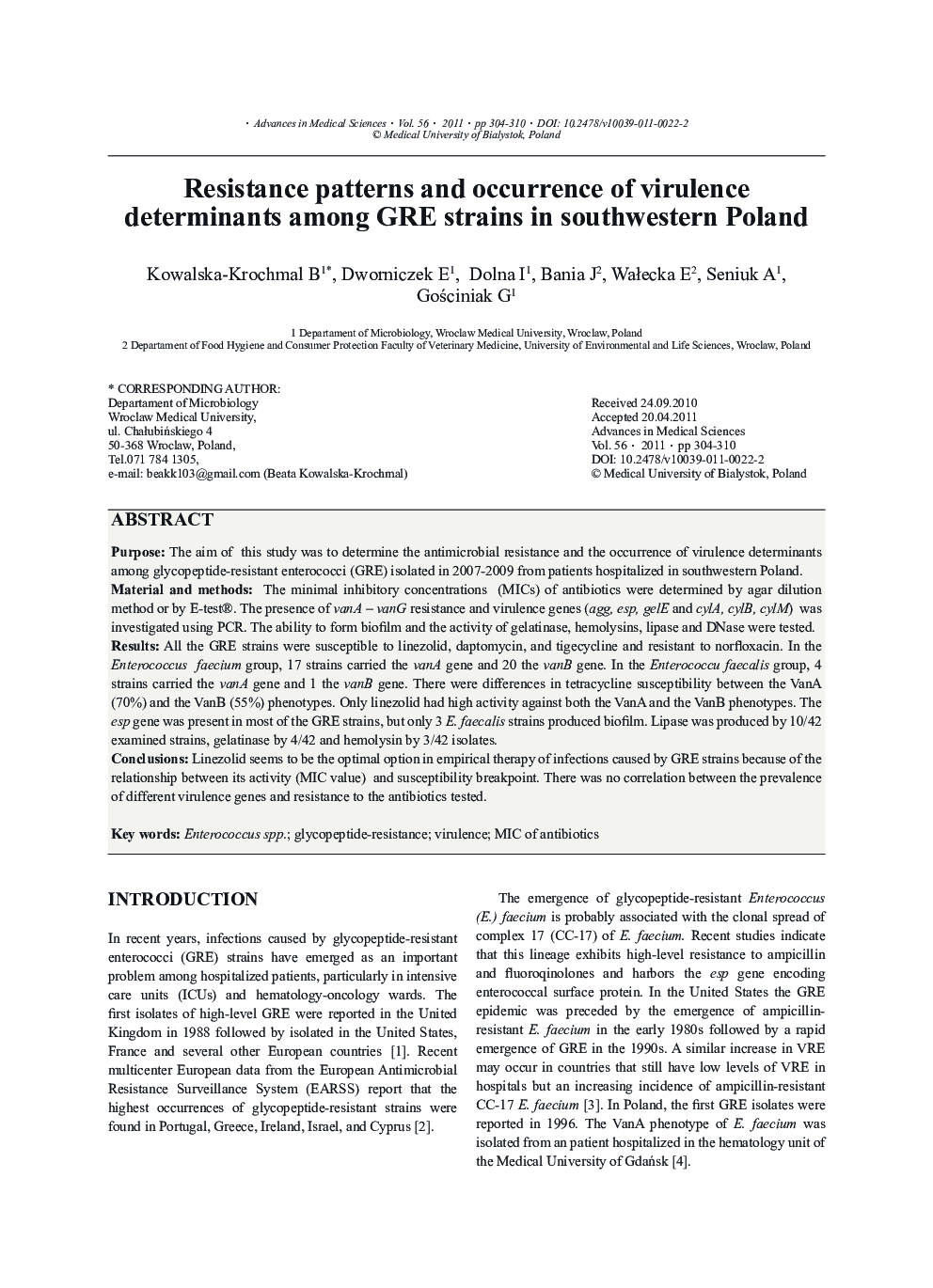| Article ID | Journal | Published Year | Pages | File Type |
|---|---|---|---|---|
| 2032182 | Advances in Medical Sciences | 2011 | 7 Pages |
ABSTRACTPurposeThe aim of this study was to determine the antimicrobial resistance and the occurrence of virulence determinants among glycopeptide-resistant enterococci (GRE) isolated in 2007–2009 from patients hospitalized in southwestern Poland.Material and methodsThe minimal inhibitory concentrations (MICs) of antibiotics were determined by agar dilution method or by E-test®. The presence of vanA – vanG resistance and virulence genes (agg, esp, gelE and cylA, cylB, cylM) was investigated using PCR. The ability to form biofilm and the activity of gelatinase, hemolysins, lipase and DNase were tested.ResultsAll the GRE strains were susceptible to linezolid, daptomycin, and tigecycline and resistant to norfloxacin. In the Enterococcus faecium group, 17 strains carried the vanA gene and 20 the vanB gene. In the Enterococcu faecalis group, 4 strains carried the vanA gene and 1 the vanB gene. There were differences in tetracycline susceptibility between the VanA (70%) and the VanB (55%) phenotypes. Only linezolid had high activity against both the VanA and the VanB phenotypes. The esp gene was present in most of the GRE strains, but only 3 E. faecalis strains produced biofilm. Lipase was produced by 10/42 examined strains, gelatinase by 4/42 and hemolysin by 3/42 isolates.ConclusionsLinezolid seems to be the optimal option in empirical therapy of infections caused by GRE strains because of the relationship between its activity (MIC value) and susceptibility breakpoint. There was no correlation between the prevalence of different virulence genes and resistance to the antibiotics tested.
